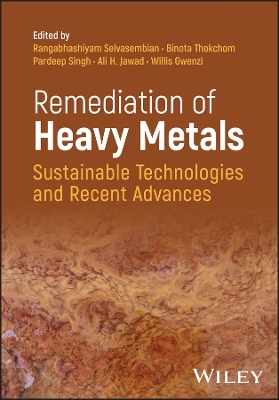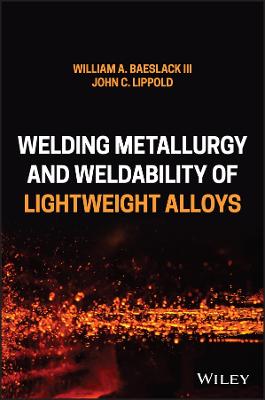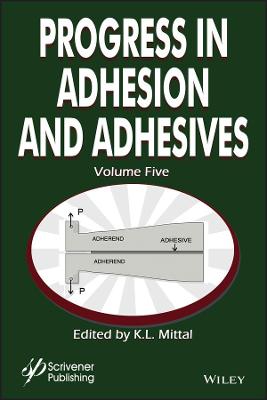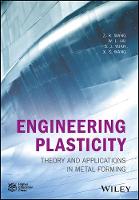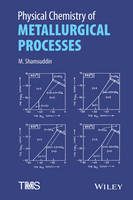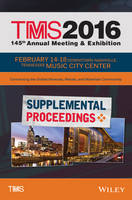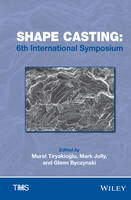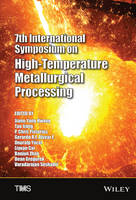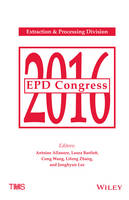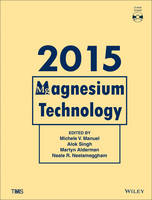Machining of Stainless Steels and Super Alloys
 -15%
portes grátis
-15%
portes grátis
Machining of Stainless Steels and Super Alloys
Traditional and Nontraditional Techniques
Youssef, Helmi A.
John Wiley & Sons Inc
01/2016
304
Dura
Inglês
9781118919569
15 a 20 dias
680
About the Author xix
Acknowledgments xxi
Nomenclature xxiii
Glossary xxvii
1 Introduction 1
1.1 Stainless Steels and Super Alloys as Difficult?]to?]Cut Materials 1
1.1.1 Historical Background of Stainless Steels and Super Alloys 2
1.1.1.1 Stainless Steels 2
1.1.1.2 Super Alloys 3
1.1.2 Industrial Applications of Stainless Steels and Super Alloys 3
1.1.2.1 Stainless Steels 3
1.1.2.2 Super Alloys 4
1.2 Traditional and Nontraditional Machining Processes 4
1.2.1 Importance of Machining in Manufacturing Technology 4
1.2.2 Classification of Machining Processes 6
1.2.3 Variables of Machining Processes 9
1.2.3.1 Input (Independent) Variables 9
1.2.3.2 Output (Dependent) Variables 9
References 10
2 Types and Classifications of Stainless Steels 11
2.1 Role of Alloying Elements in Stainless Steels 11
2.2 Types of Stainless Steels 13
2.2.1 Basic Alloys of Stainless Steels (Ferritic, Martensitic, Austenitic) 13
2.2.1.1 Ferritic Stainless Steels of AISI?]Designations 13
2.2.1.2 Martensitic Stainless Steels also of AISI?]Designation 18
2.2.1.3 Austenitic Stainless Steels of AISI?]Designation 19
2.2.2 Derived Alloys of Stainless Steels (Duplex, PH?]Alloys) 22
2.3 Concluding Comments and Comparative Characteristics 23
References 26
3 Types and Classifications of Super Alloys 27
3.1 General Features and Classifications 27
3.2 Types of Super Alloys 28
3.2.1 Fe?]Base Alloys 31
3.2.2 Ni?]Base Alloys 34
3.2.3 Co?]Base Alloys 39
References 41
4 Traditional Machining - Machinability, Tooling, and Cutting Fluids 43
4.1 Machinability Concept in Metal Cutting 43
4.1.1 Definition and General Aspects 43
4.1.2 Quantifying and Criteria of Machinability 44
4.1.2.1 Tool Life Criterion 46
4.1.2.2 Cutting Forces and Power Consumption Criterion 48
4.1.2.3 Surface Finish Criterion 50
4.1.3 Enhancing Machinability of Difficult?]to?]Cut Materials 50
4.1.3.1 Adoption of Free Machining Steels and Alloys 50
4.1.3.2 Thermally Assisted Machining (Hot Machining) 52
4.1.3.3 High Speed Machining 52
4.1.3.4 Ultrasonic?]Assisted Machining 60
4.1.3.5 Advanced Cooling Techniques 61
4.1.3.6 Cryogenic Treatment of Tool Materials 63
4.2 Cutting Tool Materials 63
4.2.1 Characteristics of an Ideal Tool Material 64
4.2.2 Types of Cutting Tool Materials 65
4.2.2.1 High Speed Steel (HSS) 65
4.2.2.2 Cast Nonferrous Alloys (Stellite and UCON) 67
4.2.2.3 Cemented Carbides (Widia) 69
4.2.2.4 Cemented Titanium Carbides (TiC?]Based Tools) 73
4.2.2.5 Cermets 73
4.2.2.6 Ceramics (Alumina?]Based Tools) 73
4.2.2.7 SiAlON 74
4.2.2.8 Cubic Boron Nitride (CBN) 74
4.2.2.9 Diamond 75
4.2.3 Tool Materials for Machining of Stainless Steels and Super Alloys 75
4.2.3.1 Cutting Tool Materials for Stainless Steels 76
4.2.3.2 Tool Materials for Super Alloys 77
4.3 Cutting Fluids for Stainless Steels and Super Alloys 81
4.3.1 Functions, Characteristics, and General Considerations 81
4.3.2 Types of Cutting Fluids 82
4.3.2.1 Water?]Base Liquids 82
4.3.2.2 Neat Oils 83
4.3.2.3 Liquid Gas or Cryogenic Coolants 83
4.3.2.4 Solid Lubricants 84
4.3.3 Application Methods 84
4.3.4 Cutting Fluids for Stainless Steels 85
4.3.4.1 Sulfo?]chlorinated Cutting Oils 85
4.3.4.2 Emulsifiable Fluids 86
4.3.4.3 Selection of Cutting Fluid for Stainless Steels 87
4.3.5 Cutting Fluids for Super Alloys 88
4.3.5.1 Turning, Planing, Shaping, and Boring 88
4.3.5.2 Broaching 88
4.3.5.3 Drilling and Reaming 89
4.3.5.4 Tapping and Thread Cutting 89
4.3.5.5 Milling 89
4.3.5.6 Sawing 89
4.3.5.7 Grinding 89
References 91
5 Traditional Machining of Stainless Steels 93
5.1 Machinability of Stainless Steels 93
5.1.1 Free?]Machining Additives of Stainless Steels 94
5.1.2 Machinability of Free?] and Nonfree?]Machining Stainless Steels 97
5.1.2.1 Ferritic and Martensitic Alloys 99
5.1.2.2 Austenitic Alloys 100
5.1.2.3 Duplex Alloys 101
5.1.2.4 PH?]Alloys 102
5.1.3 Enhanced Machining Stainless Steels 102
5.1.4 Machinability Ratings of Stainless Steels 102
5.2 Traditional Machining Processes of Stainless Steels 103
5.2.1 Turning 103
5.2.1.1 Form Turning and Cutting Off 104
5.2.2 Drilling 106
5.2.2.1 Important Hints When Drilling Stainless Steels 107
5.2.3 Reaming 110
5.2.3.1 Tool Geometry of Reamers for Stainless Steels 110
5.2.3.2 Reaming Parameters 111
5.2.4 Milling 111
5.2.5 Broaching 112
5.2.6 Grinding 114
5.3 Surface Treatments of Stainless Steel after Machining 114
5.3.1 Chemical Cleaning (Pickling) 115
5.3.2 Passivating 116
References 118
6 Traditional Machining of Super Alloys 119
6.1 Machinability Aspects of Super Alloys 119
6.2 Machinability Rating of Super Alloys 120
6.2.1 Machinability as Based on Tool Life and Nominal Cutting Speeds 121
6.2.2 Machinability as Based on Specific Cutting Energy 124
6.3 Traditional Machining Processes (TMPs) of Super Alloys 125
6.3.1 Challenges and Machining Guidelines for Super Alloys 126
6.3.2 Turning 127
6.3.3 Drilling 130
6.3.4 Reaming 133
6.3.5 Milling 133
6.3.6 Broaching 137
6.3.7 Grinding 139
6.3.7.1 Selection of Grinding Wheel Designation 139
References 140
7 Nontraditional Machining Processes - an Overview 141
7.1 Nontraditional Machining Processes 141
7.2 Mechanical Nontraditional Processes 142
7.2.1 Jet Machining 142
7.2.1.1 Abrasive Jet Machining 142
7.2.1.2 Water Jet Machining 143
7.2.1.3 Abrasive Water Jet Machining 145
7.2.2 Abrasive Flow Machining 146
7.2.2.1 Parameters Affecting MRR of AFM 147
7.2.2.2 Advantages of AFM 147
7.2.3 Ultrasonic Machining 147
7.2.3.1 Transducer and Magnetostriction Effect 149
7.2.3.2 Acoustic Horns (Mechanical Amplifiers or Concentrators) 150
7.2.3.3 Process Capabilities 150
7.3 Electrochemical and Chemical Machining Processes 151
7.3.1 Electrochemical Machining 151
7.3.1.1 Process Capabilities 152
7.3.1.2 Pulsed Electrochemical Machining (PECM) 154
7.3.1.3 Shaped Tube Electrolytic Machining (STEM) 156
7.3.1.4 Electro?]stream (ES) or Capillary Drilling 158
7.3.2 Electrochemical Grinding 159
7.3.3 Chemical Machining 160
7.3.3.1 Chemical Milling (CH?]milling) 160
7.3.3.2 Photochemical Machining (Spray Etching) 162
7.4 Thermoelectric Processes 164
7.4.1 Electrical Discharge Machining 164
7.4.1.1 Types of Generators, Applicable for ED?]Machines 165
7.4.1.2 Process Capabilities 165
7.4.2 Electron Beam Machining 166
7.4.3 Laser Beam Machining 168
7.4.4 Plasma Arc Cutting 172
7.5 Nontraditional Machining Processes - an Outlook 173
References 177
8 Nontraditional Machining of Stainless Steels and Super Alloys 179
8.1 Mechanical Nontraditional Machining Processes of Stainless Steels and Super Alloys 179
8.1.1 Jet Machining 179
8.1.2 Ultrasonic Machining (USM) of Stainless Steels and Super Alloys 180
8.1.3 Abrasive Flow Machining of Stainless Steels and Super Alloys 181
8.2 Electrochemical and Chemical Machining Processes of Stainless Steels and Super Alloys 183
8.2.1 Electrochemical Machining 183
8.2.2 Shaped Tube Electrolytic Machining (STEM) of Stainless Steel and Super Alloys 194
8.2.3 Electro?]stream (ES) Machining of Stainless Steel and Super Alloys 196
8.2.4 Electrochemical Grinding (ECG) of Stainless Steels and Super Alloys 196
8.2.5 Chemical Milling (CH?]Milling) 196
8.2.5.1 MRR and Depth Tolerance 197
8.2.5.2 Surface Quality 198
8.2.6 Photochemical Machining (Spray Etching) 199
8.3 Thermoelectric Machining Processes 201
8.3.1 Electric Discharge Machining (EDM) 201
8.3.2 Electrical Discharge Milling of SSs and SAs 204
8.3.2.1 Fields of Applications of ED?]Milling 204
8.3.2.2 Advantages and Limitations of ED?]Milling 205
8.3.3 Electron Beam Machining 206
8.3.4 Laser Beam Machining 206
8.3.5 Plasma Arc Cutting 210
8.4 Economical Analysis of ECM and Thermo?]electrical Processes of Turbo?]machinery Components 211
8.5 Nontraditional Micro?]drilling of Deep Holes - a Comparison 214
8.6 Thermally?]Assisted Machining of Stainless Steels and Super Alloys 214
8.6.1 Surface Integrity and Removal Rates for TAM of Stainless Steels and Super Alloys 215
8.6.2 Laser Assisted Turning (LAM) of Inconel?]718 216
8.6.3 Plasma Assisted Turning (PAT) of Super Alloys and PH?]Stainless Steel 217
References 218
9 Current and Recent Developments Regarding Machining of Stainless Steels and Super Alloys 221
9.1 General Considerations 221
9.2 Recent Research Work Related to Traditional Machining of Stainless Steels 222
9.3 Recent Research Works Related to Traditional Machining of Super Alloys 230
9.4 Recent Research Work Related to Nontraditional Machining of Stainless Steels and Super Alloys 242
References 245
Appendix 249
Review Questions 253
Index 265
About the Author xix
Acknowledgments xxi
Nomenclature xxiii
Glossary xxvii
1 Introduction 1
1.1 Stainless Steels and Super Alloys as Difficult?]to?]Cut Materials 1
1.1.1 Historical Background of Stainless Steels and Super Alloys 2
1.1.1.1 Stainless Steels 2
1.1.1.2 Super Alloys 3
1.1.2 Industrial Applications of Stainless Steels and Super Alloys 3
1.1.2.1 Stainless Steels 3
1.1.2.2 Super Alloys 4
1.2 Traditional and Nontraditional Machining Processes 4
1.2.1 Importance of Machining in Manufacturing Technology 4
1.2.2 Classification of Machining Processes 6
1.2.3 Variables of Machining Processes 9
1.2.3.1 Input (Independent) Variables 9
1.2.3.2 Output (Dependent) Variables 9
References 10
2 Types and Classifications of Stainless Steels 11
2.1 Role of Alloying Elements in Stainless Steels 11
2.2 Types of Stainless Steels 13
2.2.1 Basic Alloys of Stainless Steels (Ferritic, Martensitic, Austenitic) 13
2.2.1.1 Ferritic Stainless Steels of AISI?]Designations 13
2.2.1.2 Martensitic Stainless Steels also of AISI?]Designation 18
2.2.1.3 Austenitic Stainless Steels of AISI?]Designation 19
2.2.2 Derived Alloys of Stainless Steels (Duplex, PH?]Alloys) 22
2.3 Concluding Comments and Comparative Characteristics 23
References 26
3 Types and Classifications of Super Alloys 27
3.1 General Features and Classifications 27
3.2 Types of Super Alloys 28
3.2.1 Fe?]Base Alloys 31
3.2.2 Ni?]Base Alloys 34
3.2.3 Co?]Base Alloys 39
References 41
4 Traditional Machining - Machinability, Tooling, and Cutting Fluids 43
4.1 Machinability Concept in Metal Cutting 43
4.1.1 Definition and General Aspects 43
4.1.2 Quantifying and Criteria of Machinability 44
4.1.2.1 Tool Life Criterion 46
4.1.2.2 Cutting Forces and Power Consumption Criterion 48
4.1.2.3 Surface Finish Criterion 50
4.1.3 Enhancing Machinability of Difficult?]to?]Cut Materials 50
4.1.3.1 Adoption of Free Machining Steels and Alloys 50
4.1.3.2 Thermally Assisted Machining (Hot Machining) 52
4.1.3.3 High Speed Machining 52
4.1.3.4 Ultrasonic?]Assisted Machining 60
4.1.3.5 Advanced Cooling Techniques 61
4.1.3.6 Cryogenic Treatment of Tool Materials 63
4.2 Cutting Tool Materials 63
4.2.1 Characteristics of an Ideal Tool Material 64
4.2.2 Types of Cutting Tool Materials 65
4.2.2.1 High Speed Steel (HSS) 65
4.2.2.2 Cast Nonferrous Alloys (Stellite and UCON) 67
4.2.2.3 Cemented Carbides (Widia) 69
4.2.2.4 Cemented Titanium Carbides (TiC?]Based Tools) 73
4.2.2.5 Cermets 73
4.2.2.6 Ceramics (Alumina?]Based Tools) 73
4.2.2.7 SiAlON 74
4.2.2.8 Cubic Boron Nitride (CBN) 74
4.2.2.9 Diamond 75
4.2.3 Tool Materials for Machining of Stainless Steels and Super Alloys 75
4.2.3.1 Cutting Tool Materials for Stainless Steels 76
4.2.3.2 Tool Materials for Super Alloys 77
4.3 Cutting Fluids for Stainless Steels and Super Alloys 81
4.3.1 Functions, Characteristics, and General Considerations 81
4.3.2 Types of Cutting Fluids 82
4.3.2.1 Water?]Base Liquids 82
4.3.2.2 Neat Oils 83
4.3.2.3 Liquid Gas or Cryogenic Coolants 83
4.3.2.4 Solid Lubricants 84
4.3.3 Application Methods 84
4.3.4 Cutting Fluids for Stainless Steels 85
4.3.4.1 Sulfo?]chlorinated Cutting Oils 85
4.3.4.2 Emulsifiable Fluids 86
4.3.4.3 Selection of Cutting Fluid for Stainless Steels 87
4.3.5 Cutting Fluids for Super Alloys 88
4.3.5.1 Turning, Planing, Shaping, and Boring 88
4.3.5.2 Broaching 88
4.3.5.3 Drilling and Reaming 89
4.3.5.4 Tapping and Thread Cutting 89
4.3.5.5 Milling 89
4.3.5.6 Sawing 89
4.3.5.7 Grinding 89
References 91
5 Traditional Machining of Stainless Steels 93
5.1 Machinability of Stainless Steels 93
5.1.1 Free?]Machining Additives of Stainless Steels 94
5.1.2 Machinability of Free?] and Nonfree?]Machining Stainless Steels 97
5.1.2.1 Ferritic and Martensitic Alloys 99
5.1.2.2 Austenitic Alloys 100
5.1.2.3 Duplex Alloys 101
5.1.2.4 PH?]Alloys 102
5.1.3 Enhanced Machining Stainless Steels 102
5.1.4 Machinability Ratings of Stainless Steels 102
5.2 Traditional Machining Processes of Stainless Steels 103
5.2.1 Turning 103
5.2.1.1 Form Turning and Cutting Off 104
5.2.2 Drilling 106
5.2.2.1 Important Hints When Drilling Stainless Steels 107
5.2.3 Reaming 110
5.2.3.1 Tool Geometry of Reamers for Stainless Steels 110
5.2.3.2 Reaming Parameters 111
5.2.4 Milling 111
5.2.5 Broaching 112
5.2.6 Grinding 114
5.3 Surface Treatments of Stainless Steel after Machining 114
5.3.1 Chemical Cleaning (Pickling) 115
5.3.2 Passivating 116
References 118
6 Traditional Machining of Super Alloys 119
6.1 Machinability Aspects of Super Alloys 119
6.2 Machinability Rating of Super Alloys 120
6.2.1 Machinability as Based on Tool Life and Nominal Cutting Speeds 121
6.2.2 Machinability as Based on Specific Cutting Energy 124
6.3 Traditional Machining Processes (TMPs) of Super Alloys 125
6.3.1 Challenges and Machining Guidelines for Super Alloys 126
6.3.2 Turning 127
6.3.3 Drilling 130
6.3.4 Reaming 133
6.3.5 Milling 133
6.3.6 Broaching 137
6.3.7 Grinding 139
6.3.7.1 Selection of Grinding Wheel Designation 139
References 140
7 Nontraditional Machining Processes - an Overview 141
7.1 Nontraditional Machining Processes 141
7.2 Mechanical Nontraditional Processes 142
7.2.1 Jet Machining 142
7.2.1.1 Abrasive Jet Machining 142
7.2.1.2 Water Jet Machining 143
7.2.1.3 Abrasive Water Jet Machining 145
7.2.2 Abrasive Flow Machining 146
7.2.2.1 Parameters Affecting MRR of AFM 147
7.2.2.2 Advantages of AFM 147
7.2.3 Ultrasonic Machining 147
7.2.3.1 Transducer and Magnetostriction Effect 149
7.2.3.2 Acoustic Horns (Mechanical Amplifiers or Concentrators) 150
7.2.3.3 Process Capabilities 150
7.3 Electrochemical and Chemical Machining Processes 151
7.3.1 Electrochemical Machining 151
7.3.1.1 Process Capabilities 152
7.3.1.2 Pulsed Electrochemical Machining (PECM) 154
7.3.1.3 Shaped Tube Electrolytic Machining (STEM) 156
7.3.1.4 Electro?]stream (ES) or Capillary Drilling 158
7.3.2 Electrochemical Grinding 159
7.3.3 Chemical Machining 160
7.3.3.1 Chemical Milling (CH?]milling) 160
7.3.3.2 Photochemical Machining (Spray Etching) 162
7.4 Thermoelectric Processes 164
7.4.1 Electrical Discharge Machining 164
7.4.1.1 Types of Generators, Applicable for ED?]Machines 165
7.4.1.2 Process Capabilities 165
7.4.2 Electron Beam Machining 166
7.4.3 Laser Beam Machining 168
7.4.4 Plasma Arc Cutting 172
7.5 Nontraditional Machining Processes - an Outlook 173
References 177
8 Nontraditional Machining of Stainless Steels and Super Alloys 179
8.1 Mechanical Nontraditional Machining Processes of Stainless Steels and Super Alloys 179
8.1.1 Jet Machining 179
8.1.2 Ultrasonic Machining (USM) of Stainless Steels and Super Alloys 180
8.1.3 Abrasive Flow Machining of Stainless Steels and Super Alloys 181
8.2 Electrochemical and Chemical Machining Processes of Stainless Steels and Super Alloys 183
8.2.1 Electrochemical Machining 183
8.2.2 Shaped Tube Electrolytic Machining (STEM) of Stainless Steel and Super Alloys 194
8.2.3 Electro?]stream (ES) Machining of Stainless Steel and Super Alloys 196
8.2.4 Electrochemical Grinding (ECG) of Stainless Steels and Super Alloys 196
8.2.5 Chemical Milling (CH?]Milling) 196
8.2.5.1 MRR and Depth Tolerance 197
8.2.5.2 Surface Quality 198
8.2.6 Photochemical Machining (Spray Etching) 199
8.3 Thermoelectric Machining Processes 201
8.3.1 Electric Discharge Machining (EDM) 201
8.3.2 Electrical Discharge Milling of SSs and SAs 204
8.3.2.1 Fields of Applications of ED?]Milling 204
8.3.2.2 Advantages and Limitations of ED?]Milling 205
8.3.3 Electron Beam Machining 206
8.3.4 Laser Beam Machining 206
8.3.5 Plasma Arc Cutting 210
8.4 Economical Analysis of ECM and Thermo?]electrical Processes of Turbo?]machinery Components 211
8.5 Nontraditional Micro?]drilling of Deep Holes - a Comparison 214
8.6 Thermally?]Assisted Machining of Stainless Steels and Super Alloys 214
8.6.1 Surface Integrity and Removal Rates for TAM of Stainless Steels and Super Alloys 215
8.6.2 Laser Assisted Turning (LAM) of Inconel?]718 216
8.6.3 Plasma Assisted Turning (PAT) of Super Alloys and PH?]Stainless Steel 217
References 218
9 Current and Recent Developments Regarding Machining of Stainless Steels and Super Alloys 221
9.1 General Considerations 221
9.2 Recent Research Work Related to Traditional Machining of Stainless Steels 222
9.3 Recent Research Works Related to Traditional Machining of Super Alloys 230
9.4 Recent Research Work Related to Nontraditional Machining of Stainless Steels and Super Alloys 242
References 245
Appendix 249
Review Questions 253
Index 265

